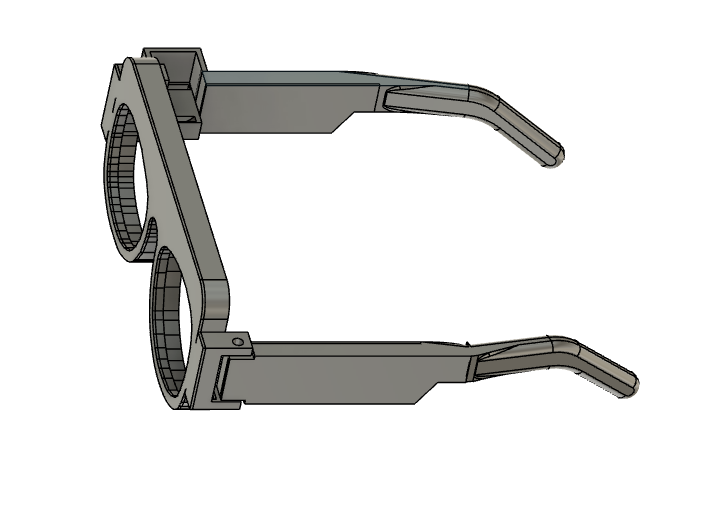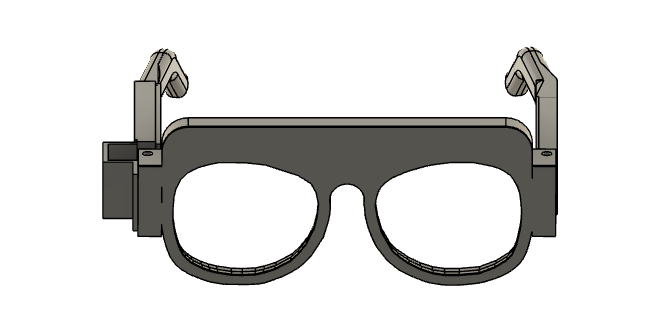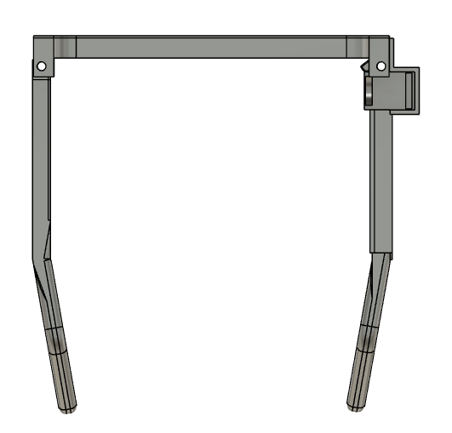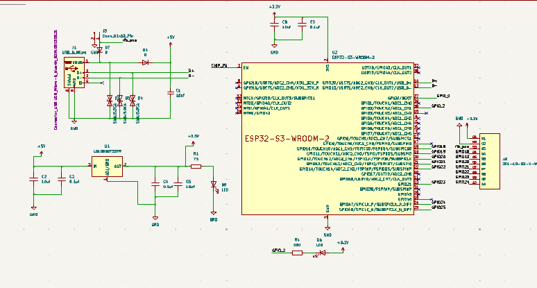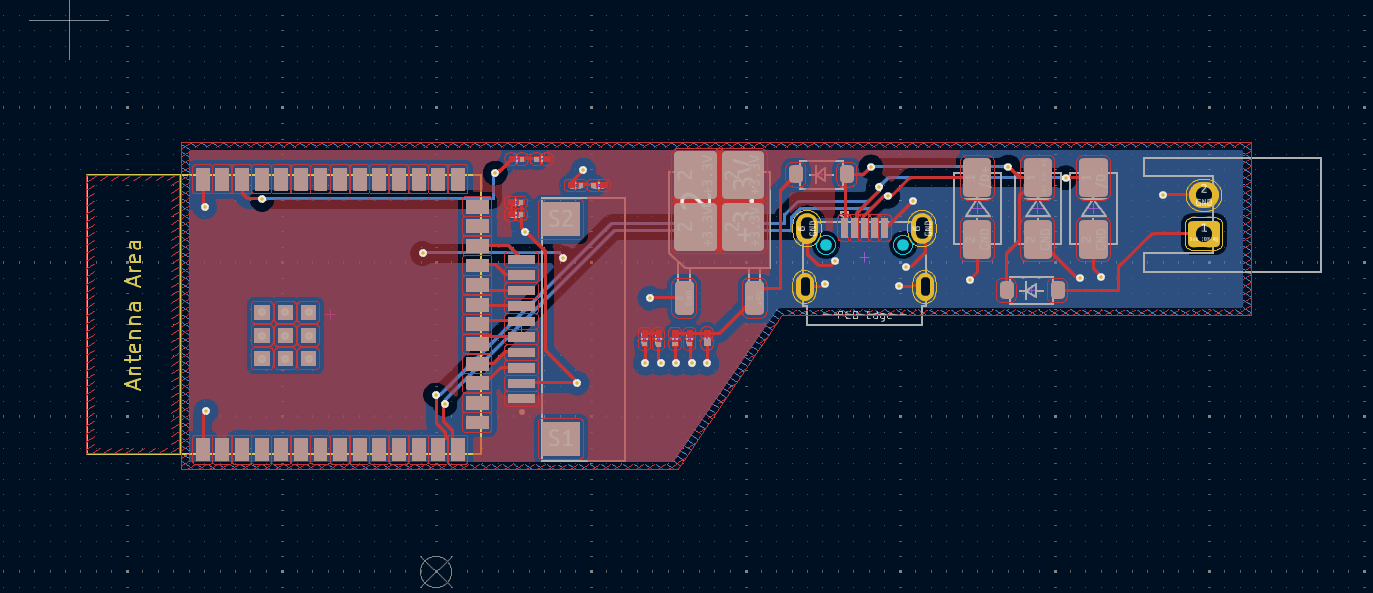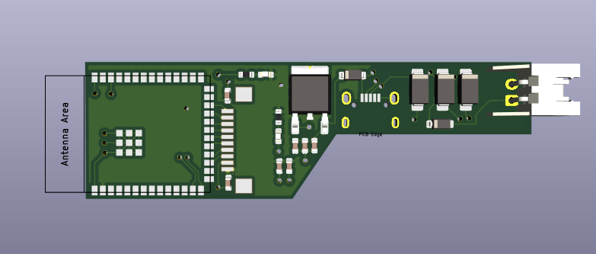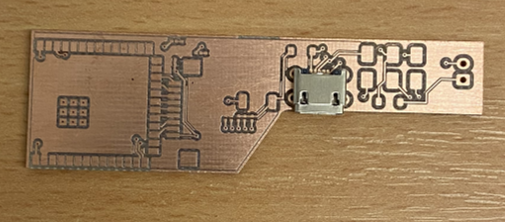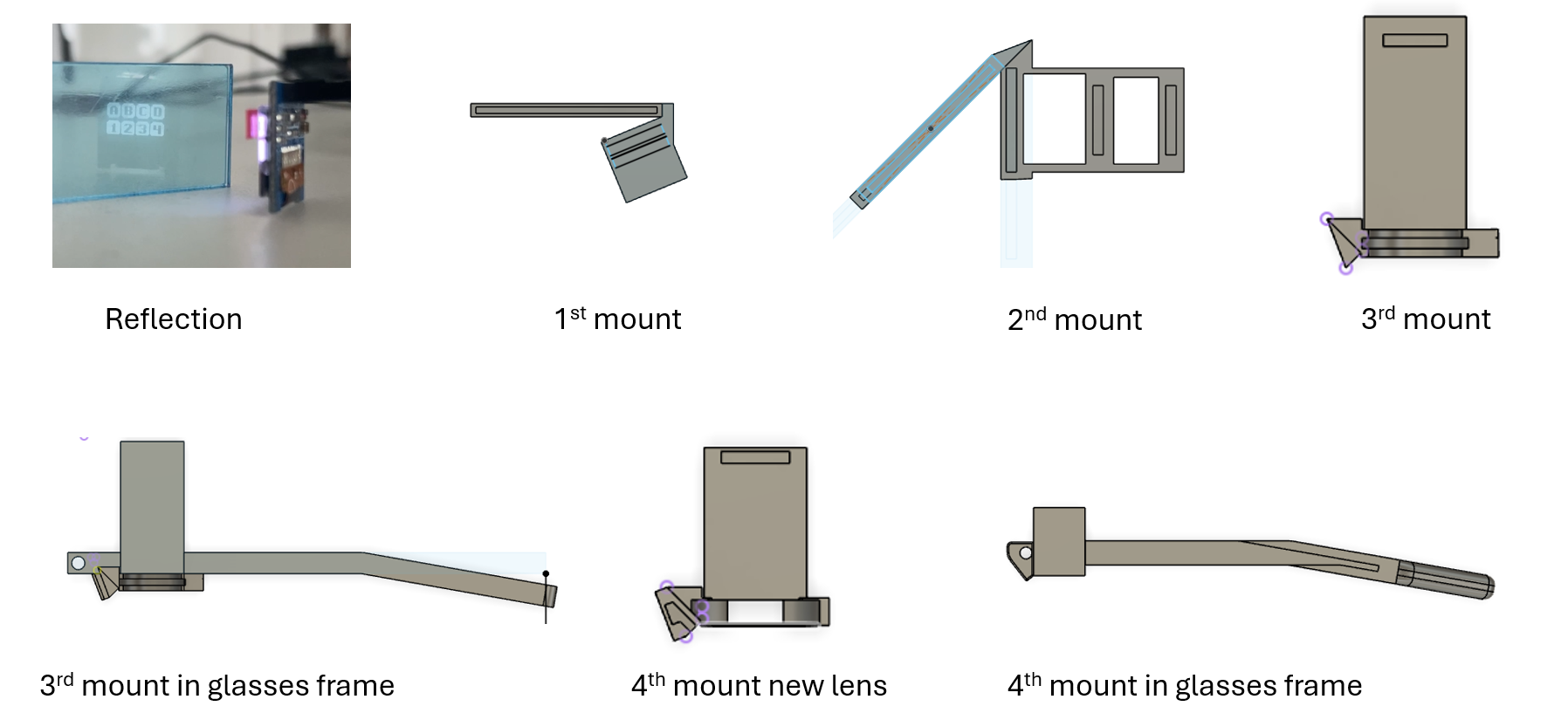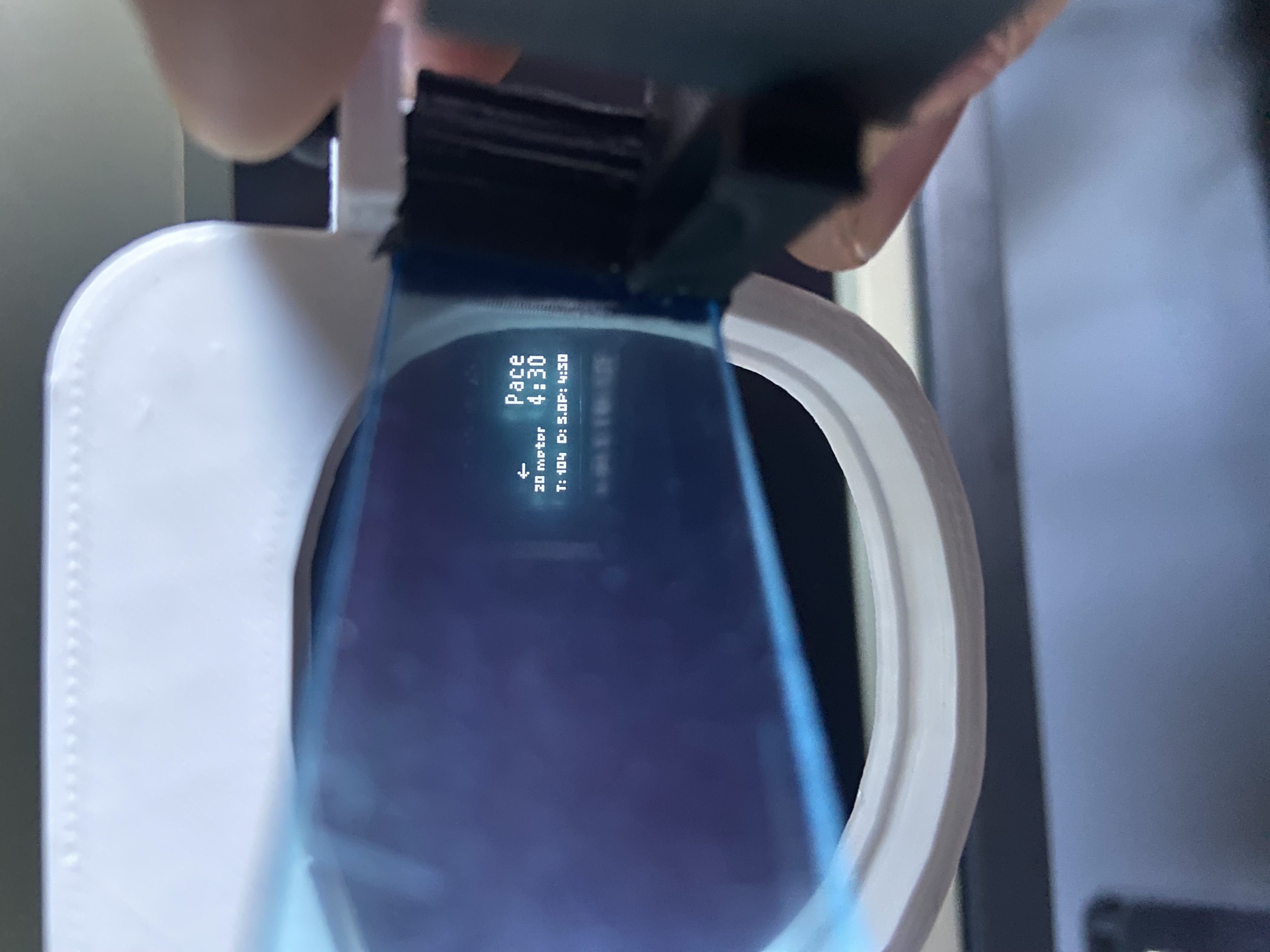Heads-Up Display
The heads-up display (HUD) is achieved by reflecting a small display onto a beam splitter, allowing the user to see digital information overlaid on their real-world view.
The image below illustrates the iterative development process, starting with a simple reflection test, followed by a series of progressively refined mounts.
Each iteration improves optical clarity, and ease of integration until the final version is seamlessly housed within the smart glasses frame.
This image provides a first-person perspective of the prototype HUD in action, as seen by the wearer. The digital overlay appears in the
user’s field of view, displaying real-time data while maintaining visibility of the surrounding environment.
Blue acrylic was used for early prototyping due to its affordability and ease of replacement. However, for the final iteration, a small piece of
glass with a reflective coating will be used. This material was challenging to source and is more fragile, so it has been reserved for the
final version of the prototype.
